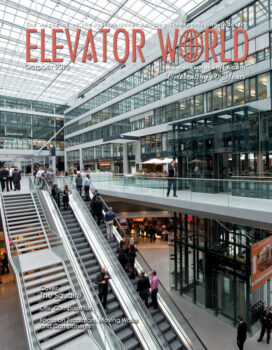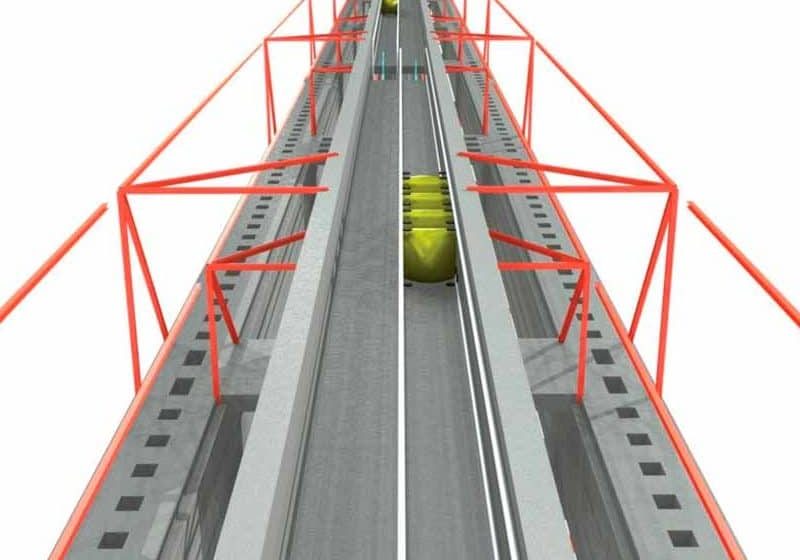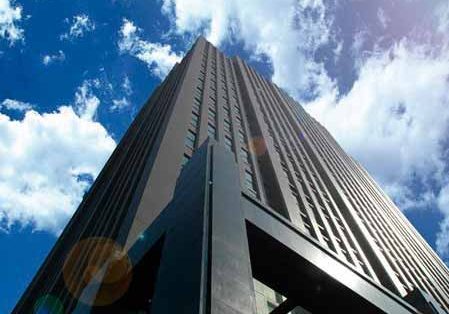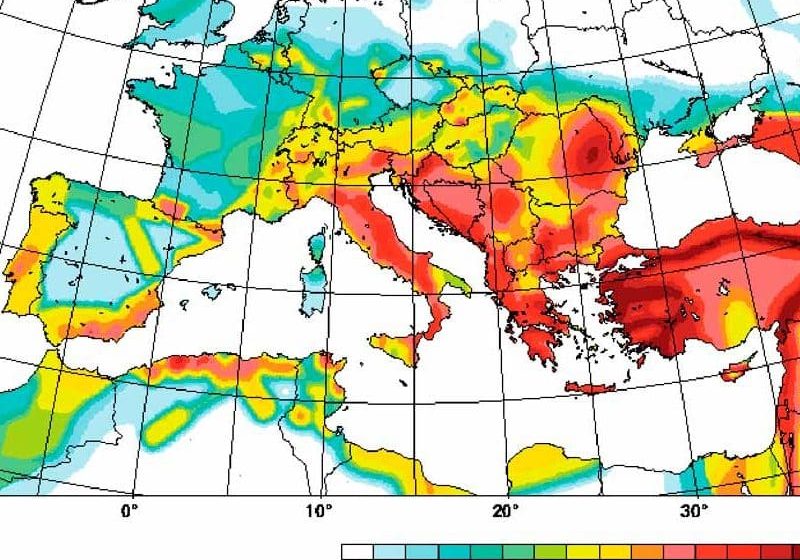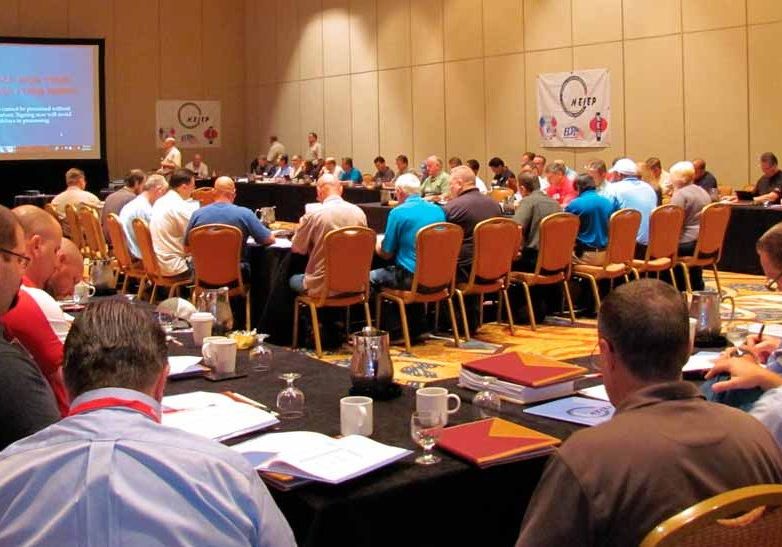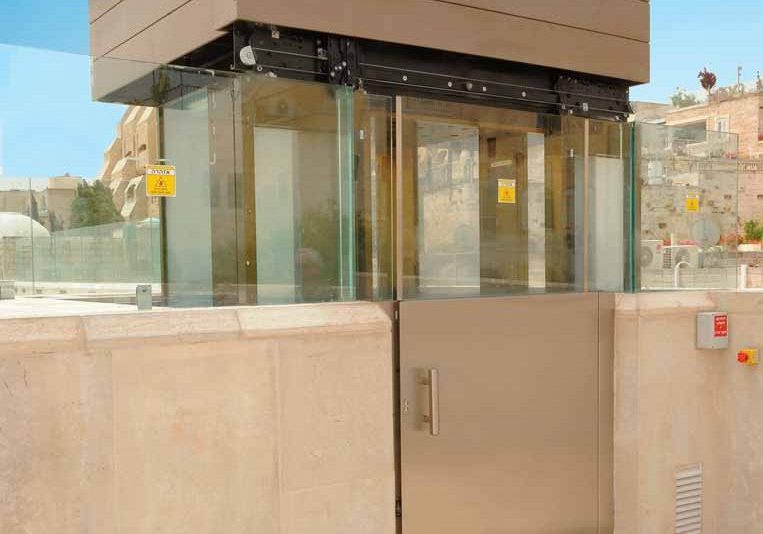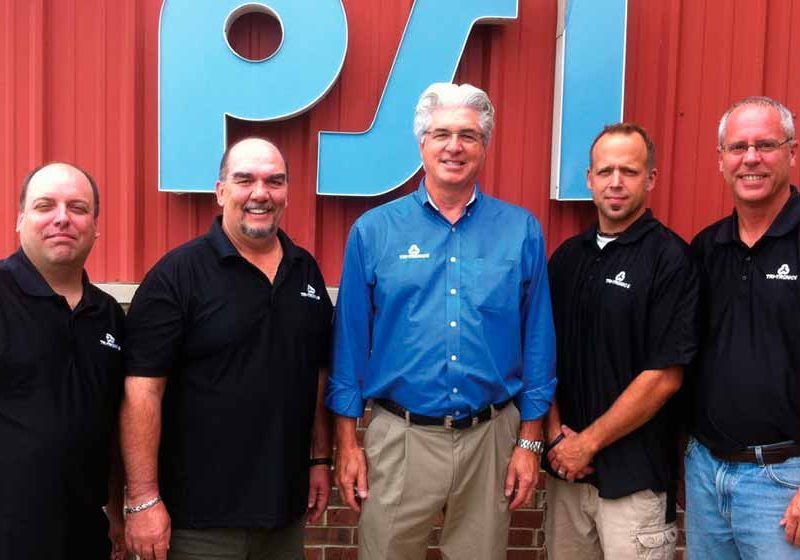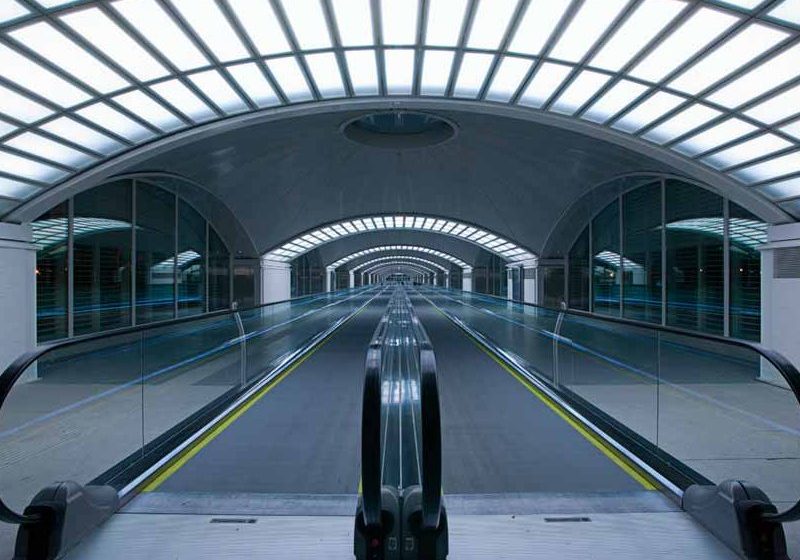Turning Escalators into Profit Centers while Enhancing Safety
Oct 1, 2013

ADRailUSA has licensed a product that creates revenue for escalator maintenance companies and their customers. That’s because the company frequently hires escalator maintenance agencies to adjust the escalators, and often hires them to install ADRail film on escalator handrails at venues such as O’Hare International Airport in Chicago and Boston Logan International Airport. ADRailUSA contends the product can make an important contribution to the escalator industry, both in terms of revenue and safety.
Reliable Film
EHC Global invented ADRail film specifically for escalators, taking into account the pressure from the handrail drive and the continuous forward and backward bending to which handrails are subjected. In more than 2,000 installations worldwide, ADRail film has never unraveled or come off, which would trip a safety switch or shut down an escalator. If the film becomes damaged, such as by being vandalized, one may rip off a small bit of it by tugging on any loose end. However, installation makes vandalism unlikely: edges of the film are buried beneath the handrail away from prying fingers, and all seams are heat sealed. ADRailUSA performs repairs within 24 hr.
Graphic Film and Graphic Handrail Options
EHC Global also sells new products called BrandRail™ and SafeRail™ that feature permanently applied handrail graphics. ADRailUSA believes these innovations benefit the industry.
Accident Prevention
In the process of doing business, we seem to have created a product that may dramatically reduce escalator trip and fall accidents. I say we “stumbled onto it,” because we are trying to sell advertising, not reduce accidents. ADRail USA licenses escalator handrail film from EHC Global. We print advertising graphics on the film and apply it to escalator handrails.
Escalator Safety
Because escalator accident rates per million riders are relatively low, one might argue that safety is not a big issue. For example, a Boston Logan study[1] mentioned that an estimated 1.29 trip-and-fall accidents occurred per one million riders. In a Taipei Metro study,[2] the accident rate was 0.815 trips and falls per million. But, as the Logan study points out, the reason to care about this is because a low accident rate on a high-volume transportation system results in a large number of accidents. For example, Boston Logan recorded 140 escalator trip-and-fall accidents over the two years surveyed, and Taipei Metro recorded 187 accidents in one year.
The Roaring Twenties
As early as the 1900s, it was well known that judging the speed, motion and direction of escalators was a challenge for some people. Further, escalator step treads’ moire pattern had a tendency to produce dizziness. Additionally, the moving, solid-black handrails offered no visual cues for people to judge a unit’s speed, motion and direction. In response, white dots were added to the handrail surface in the 1920s. This was perhaps the first method implemented to prevent trip-and-fall accidents. Fast forward to today, and dotted handrails have mostly disappeared, because the white dots get dirty and become obscured.
We haven’t seen any data on the safety effects of dotted handrails. But, we believe that if an escalator handrail has an advertising graphic on it, trip-and-fall accidents are dramatically reduced.
Results of Recent Studies
The Boston and Taipei Metro studies identified causes of escalator trip-and-fall accidents. The data suggests that people may be distracted by carrying too much luggage, talking to fellow riders or on cell phones, or simply hurrying to catch a plane or train. Finding ways to focus peoples’ attention back to the escalator is a good idea. To address the problem, both studies call for implementing more signage, rather than addressing the distraction issue. ADRailUSA and EHC Global conducted two independent studies and a comparative analysis of existing safety studies that found:
The impact of advertising handrail graphics on escalator accident rates appears to be very positive. The following chart shows an airport–to-airport accident-rate comparison.[3] The resulting zero accidents per million riders is a step forward in escalator safety.
When people board escalators, they seem to use advertising graphics on handrails to adjust their walking speeds, in turn taking more natural steps on and off the units. Most loss-of-balance accidents occur when people hesitate, or step on or off escalators when they are off their natural stride.
Understanding More
With safety data based on the 108 million rides with ADRail film installed at O’Hare, data on ADRail begins to approach a very high degree of statistical reliability. ADRailUSA will willingly share this data and help maintenance companies and their clients understand how it may be possible to dramatically reduce liability exposure from trips and falls. For more information, contact ADRailUSA at phone: (800) 301.9985 or website: www.adrailusa.com.
References
[1] Howland, et al., 2012, “Older Adult Falls at a Metropolitan Airport: 2009–2010,” Journal of Safety Research 43, p. 134.
[2] Chi, C.F., Chang, T.C., & Tsou, C.L., 2005, “In-depth Investigation of Escalator Riding Accidents in Heavy Capacity MRT Stations.” Accident Analysis and Prevention, p. 39, 662–670.
[3] Cotteta, G., 2013, “Special Report: Comparing Safety Records of ADRail Vs. Original Equipment,” p. 1.
Get more of Elevator World. Sign up for our free e-newsletter.

